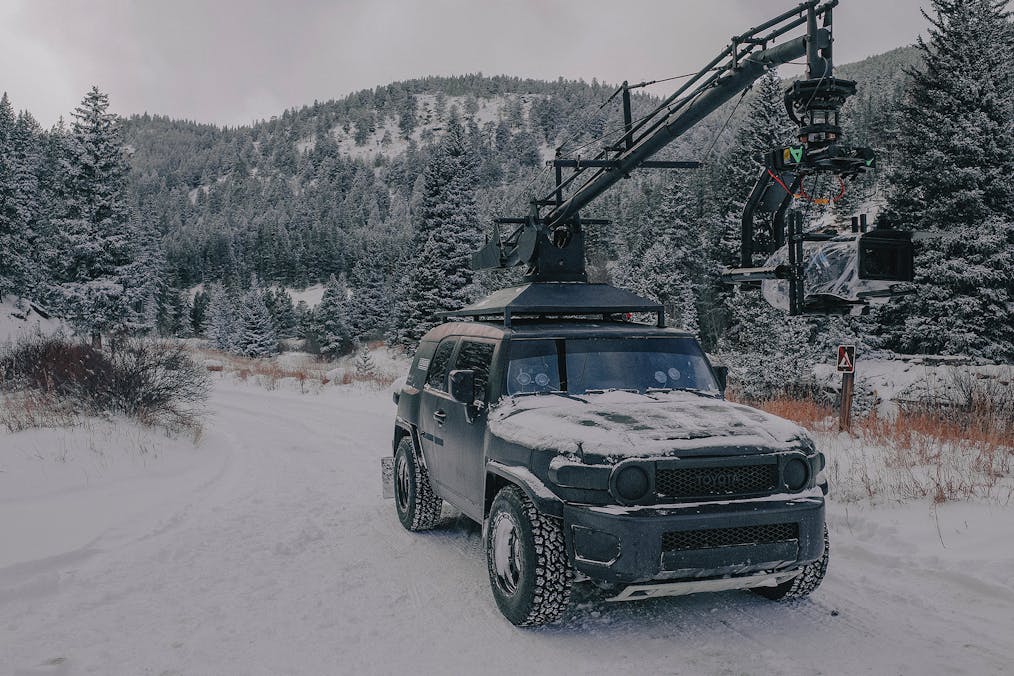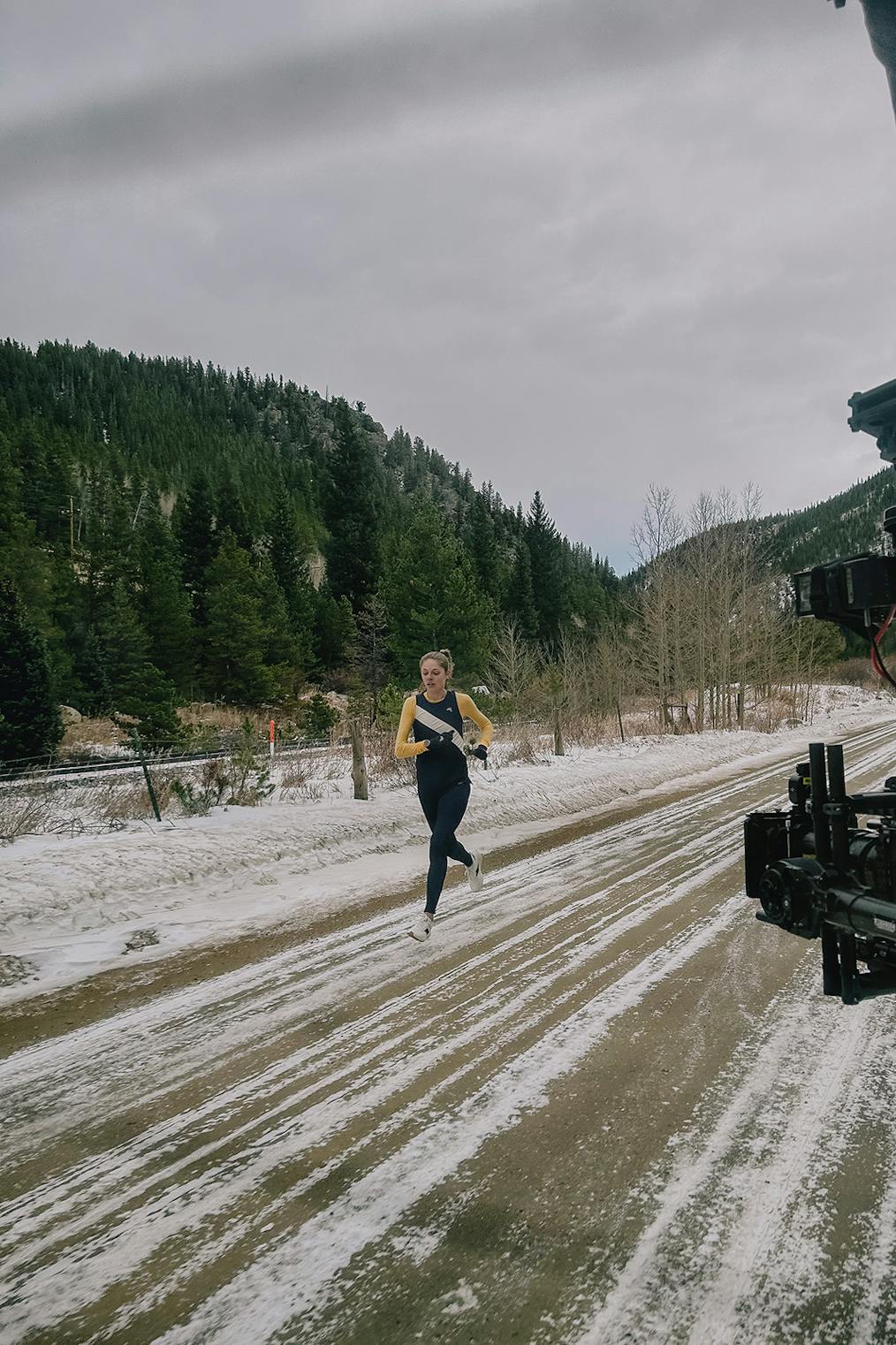A Tracksmith Film
Church of the
Long Run
DIRECTED BY EMILY MAYE
Sunday mornings are a time for reflection. In the congregation of runners, we often single out that day as the one where we too, pay our penance. The Sunday long run becomes a weekly ritual where we allow for the time it takes. Whether in a group or in solitude, we carve out the space necessary to participate in physical communion. One received only through prolonged effort. Done correctly, it’s a truly hypnotic, meditative experience built at the altar of another week's worth of showing up. For the runner, this is deliverance. This is church.
"Church of the Long Run" follows nurse practitioner and runner Sam Roecker in real time on her Sunday long run in the foothills of Rollinsville, Colorado. The film is both a celebration and an acknowledgment of the importance of dedicating oneself to the process. It serves as an authentic portrait of a moment in time when the runner is truly engaged in her movement. We get to come along for the ride (run).
Remaining faithful to every inch of the road, the camera patiently leads and follows, moving around the runner to reveal a 360° perspective of her run and the scenery that surrounds her. Utilizing an arm car and shot on the Alexa LF and Cooke 30-95 FF Zoom, the film features long uninterrupted takes, while the camera interferes minimally, offering an honest and meditative look at the process of the long run. A testament to dedication and consistency, it is about going through the experience and taking what you can from it.
Director: Emily Maye
Color and Cinematographer: Dustin Miller
Assistant Cinematographer: Asa Reed
Original Score: Michael A. Muller
Editor: Chris Milliman
VFX: Andrew Fallon
Precision Driver: Colin Floom
Arm Operator: Luke Askelson
Gimbal Technician: Doug Hrdlicka

Tracksmith: What was the inspiration for the film and how did it come to be?
Emily Maye: As we've photographed so many days of continuous runs over many years, we thought, “It would be really cool to watch this in its simplest form: to see a whole run unfold uninterrupted.” That element of letting a run occur naturally has been an essential part of our storytelling. This film is the fullest extension of that idea.
Sam, what was this long run like for you?
Sam Roecker: It was different because I have definitely fallen out of what people would call “tip top shape” this year as I’ve been focusing on other goals, mainly school and finishing my degree. I took this year off from racing and long runs have been the staple of my training. But there was just this new kind of pressure for this long run, with it being completely non-stop and completely alone in a place that I've never run before.
Coming from sea level and going up to over 9,000 feet was really intimidating. I've had a few injuries since my marathon PR, which was two years ago at this point. I felt like I was almost preparing for a race when I was doing it. It was exciting to feel the adrenaline of getting ready for a big event in a different way.
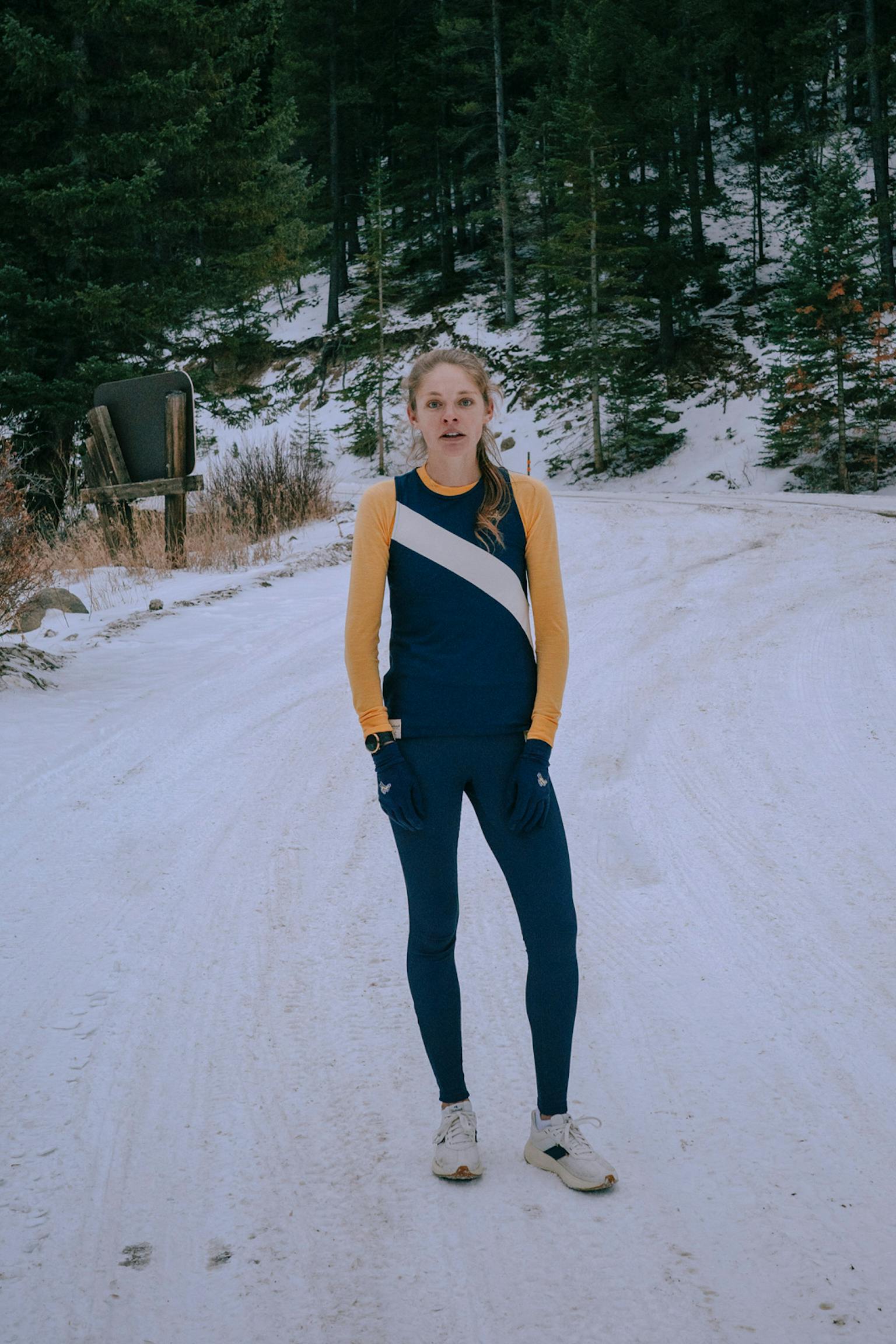
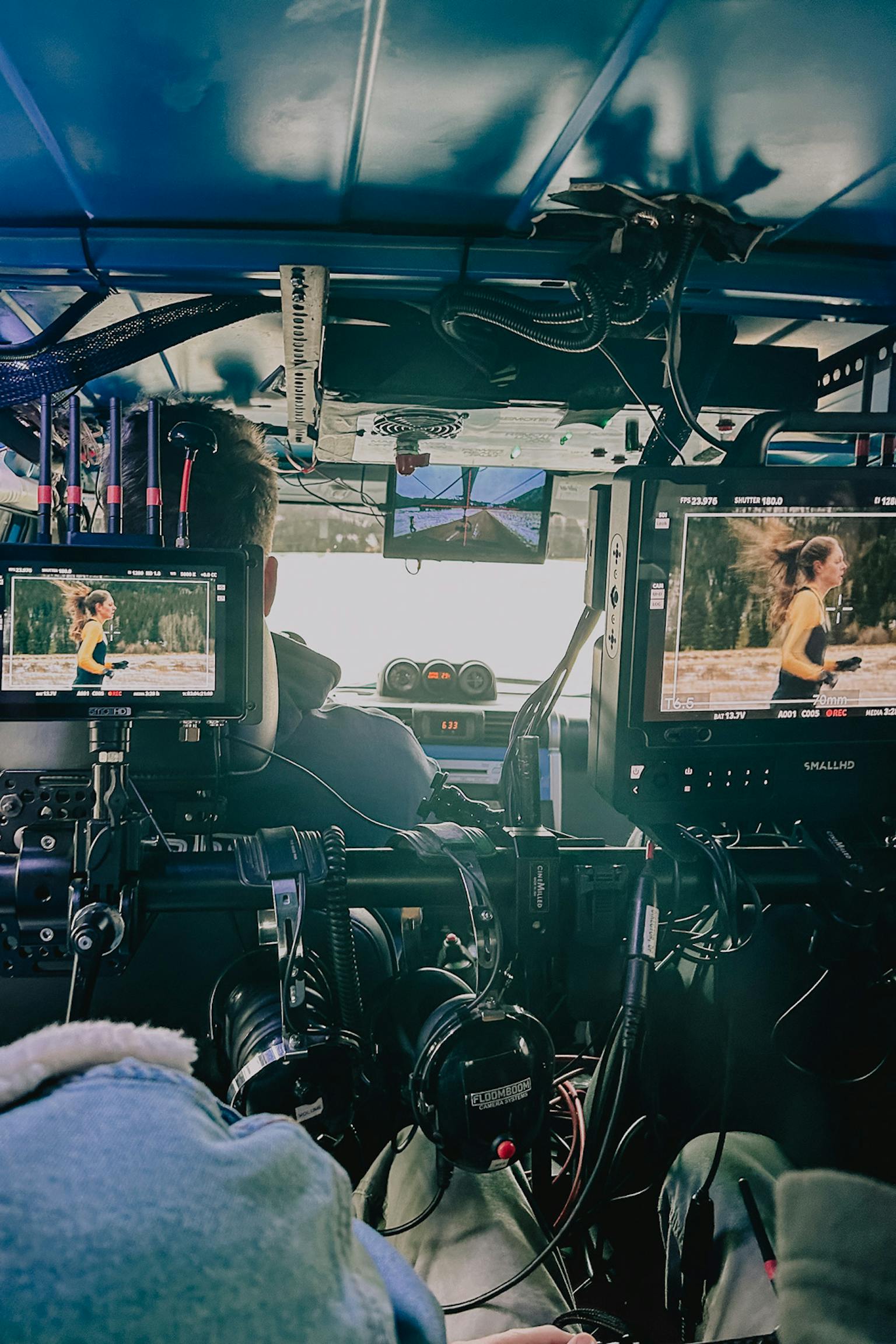
What's unique about filming a long run this way?
EM: From a theatrical standpoint, there were a lot of unique aspects that we observed by taking on this project. It became about patience. There’s such a long period of time that goes by, and you don’t want to show everything at once with a bunch of quick camera moves. We wanted to show her going on the run with as few interruptions as possible, but we also wanted to be able to give something to the viewer that provides some context for where she is and what she’s doing. So we first start by seeing her, by leading her with the camera through space. And then as we have a cut, we reveal the 180-degree perspective of what she sees out in the world. It gives the viewer a unique sense of her environment. It's not about the speed that she's running or about anything heroic that she's doing. It's about the fact that she's slowly ticking off these miles while moving through space. That really struck me as a way of experiencing the outdoors and through the entirety of the run. I knew that it could be interesting, but as it all started to come together, that sense of distance covered became a very powerful component of the film.
She moves through several landmarks. There is the yellow house halfway through that is a landmark for any runner that runs this road. Then you have a turnaround where she goes and stops in the bathroom. On the way back you have the bridge that she passes under with the graffiti that she first passed on the way out. There's a sense of the miles flowing by and continual progress that is really unique to running and I think really beautiful to watch.
"In that moment, I understood what she meant by 'The sport is changing.' It’s not over. It’s changing. It was really emotional."
SAM ROECKER
Sam, what was the experience of traversing that road like for you?
SR: I loved being on the road. I don't think I've ever run somewhere so long and beautiful, especially in terms of an out and back with such gorgeous scenery. It's super runnable in the sense that there are some elevation changes up and down but the hills are rolling. So you can get a good rhythm, especially on the way back. It’s just gorgeous to look out at the mountains and the snow covered trees. It was an absolutely magical day. It was mystical.
Can you talk about the technical side of things? It can be so difficult to make something so simple.
EM: To be able to shoot these long uninterrupted sequences, you really have to have proper communication within the crew. You have one person driving, someone operating the tilt and pan of the camera, someone operating the boom of the arm on the car, and someone pulling focus. So I have to call instructions to the entire team so that all of those moves happen at once. Our goal was to make sure we didn't interrupt the viewer's experience of calmly watching her move through space so you need a solid plan. It meant that we had to be really careful and smooth and patient with each of the camera directions and movements. We had to have a communal sense within our group of how everyone was going to move at the same time and that was a particular challenge. I knew it would be difficult, but it was more difficult than I thought. We didn't just mount the camera and let it roll. And there's no automation here. Honestly, I'm glad I didn't know how hard it was going to be before we did it.
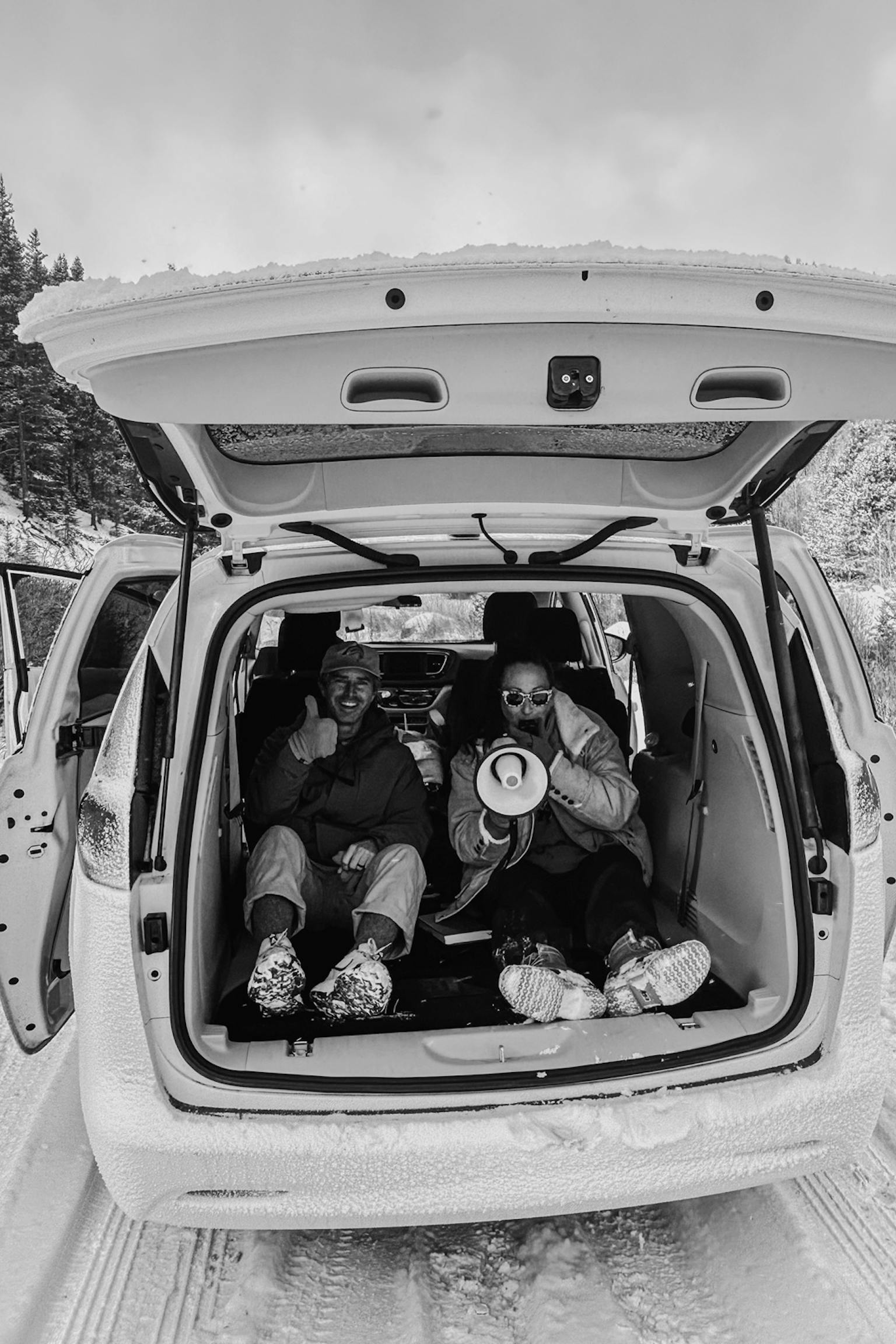
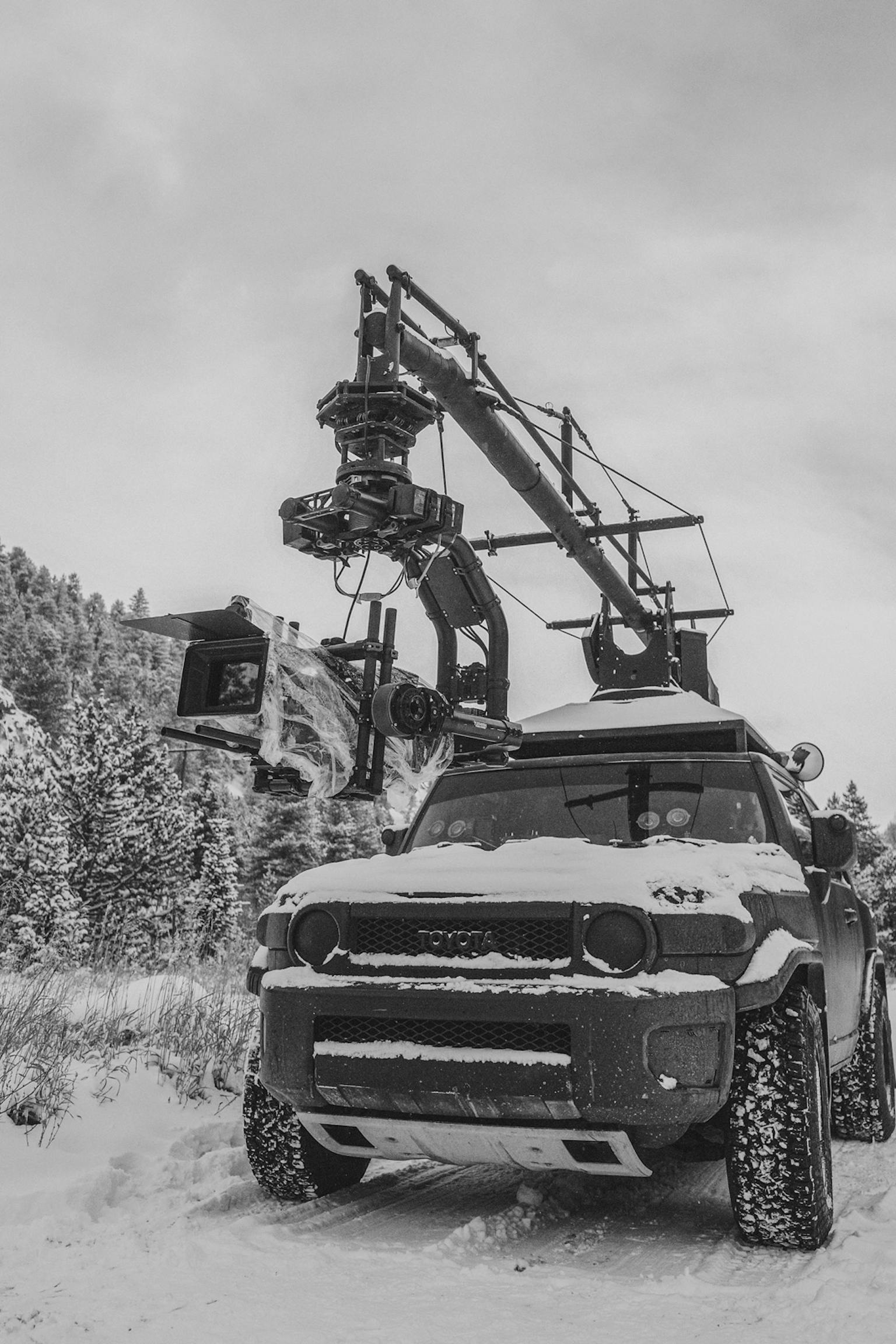
“I think this film demonstrates a tremendous love for running. And to me it really is one of the most Tracksmith things we’ve done...”
EMILY MAYE
What does it mean to capture running in this way?
EM: I think this film demonstrates a tremendous love for running. And to me it really is one of the most Tracksmith things we've done, in that there's so much love and affection for the simplicity of what she's doing. This feels like such a clear articulation of what we started doing eight and a half years ago, letting the actual experience of being out on a run be enough to show people the beauty of the sport. There’s something really moving about it.
Sam, what did it mean to get to do this run?
SR: Honestly, it was really emotional to be filming this long run. I was completely alone. I had no idea of what was going on in the filming cars. It felt like I was in solitude with my thoughts. I've had a rough two years in terms of racing or even trying to work out and get back into shape.
It's been hard. I've had a lot of ups and downs. I think I hit my lowest of lows a couple weeks before this. A friend said to me, “The sport isn't over. It's just different.” I was just thinking of that the whole run. Thinking about how awesome it was being out on that road, completely alone in a place that I would have never gone if it wasn't for running. I was just taking in the scenery: how beautiful it was and how at peace I was running and doing what I love to do by myself. In that moment, I understood what she meant by, “The sport is changing.” It’s not over. It's changing. It was really emotional. And then just to see the hard work that Emily put in to make it happen, it was magical.

